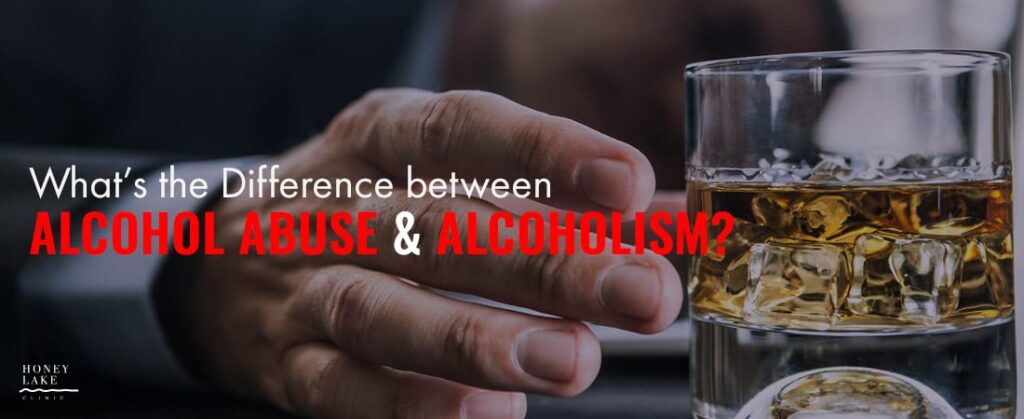What’s the Difference between Alcohol Abuse and Alcoholism?
Misusing alcohol is a serious problem in our country. Socially acceptable practices surrounding alcohol consumption—including overindulging—have dulled awareness of where the fun ends and serious issues begin.
It has become very difficult for drinkers and those around them to know when alcohol use has crossed the line and become alcohol abuse or alcoholism. If you’d like to speak to someone confidentially, call (844) 747-7772.
Those two terms, alcohol abuse and alcoholism, are often used interchangeably. In reality, alcohol abuse and alcoholism each have their own unique set of identifiers and characteristics. While both can have adverse effects on your life, understanding the differences between the two will help you to understand the severity of your addiction and the best course of treatment.
What is Alcohol Abuse?
According to the U.S. Centers for Disease Control and Prevention (CDC), alcohol abuse is a pattern of drinking that results in harm to one’s health, interpersonal relationships, or ability to work. In laymen’s terms, a person abuses alcohol when their pattern of drinking disrupts or interferes with daily activities.
If you drink too much at one time or several times throughout the week and find it difficult to take care of your personal responsibilities, then alcohol abuse may be an issue. We can help. Call and speak with someone confidentially at (844) 747-7772.
Not everyone who drinks too much is going to develop an Alcohol Use Disorder (AUD). Common signs of alcohol abuse include:
- Turning to alcohol to drink, relax, manage stress or attempt to feel “normal”
- Regularly engaging in binge drinking or heavy drinking (as defined below)
- Drinking more alcohol than intended
- Increased social isolation from friends, family members, colleagues
- Choosing to drink alone and hiding alcohol use
- Experiencing hangovers or feeling hungover when not drinking
- Avoiding responsibilities just to drink
- Decreased performance at school, work
- Feeling like alcohol is needed to get through the day
- Feeling unable to stop drinking despite repeated attempts
- Rationalizing drinking behavior
- Blacking out temporarily or experiencing short-term memory loss
- Experiencing withdrawal symptoms if alcohol isn’t used
- Drinking despite the negative consequences that can result, such as losing a job, relationship
The National Institute on Alcohol Abuse and Alcoholism (NIAAA) says that about 16 million people in the U.S. have an AUD.
How Much is Too Much?
The CDC defines excessive drinking as drinking behavior that includes binge drinking, heavy drinking, and any drinking by pregnant women or anyone younger than age 21. Binge drinking for women is consuming four or more drinks on one single occasion, for men it’s five or more. Heavy drinking for women is eight or more drinks in a week, while for men it’s fifteen or more.
Alcohol abuse can cause damage your mind, body, and spirit. It is not uncommon to see alcohol abuse turn into alcoholism.
What is Alcoholism?
Alcoholism, also known as alcohol dependency, is a chronic disease characterized by the consumption of alcohol at a level that interferes with physical and mental health.
Alcoholism is influenced by genetic and environmental factors, and because it is chronic, alcoholism lasts a lifetime. Key signs of alcoholism include:
- A strong craving for alcohol
- Continued use despite repeated physical, psychological, or interpersonal problems
- The inability to limit drinking
Alcoholism-related troubles can include:
- Legal troubles, arrests
- Domestic disputes that can turn violent
- DUI charges or accidents
- Child-welfare concerns
- Hospitalization or being involuntarily admitted
An alcoholic will continue to drink despite serious health, legal, or family ramifications. People with addictions, such as alcoholism, have a chemical dependency that prevents them from changing on their own. Unlike with alcohol abuse, willpower alone isn’t enough to help them overcome their addiction. This is why so many people with alcohol dependency end up homeless, separated from family, unemployed, and eventually die from their addiction.
Over time, alcoholics build up a tolerance for alcohol, meaning they need to consume more and more in order to feel the desired effects. And when they stop drinking, they begin to experience withdrawal symptoms such as cravings, anxiety, shakiness, headaches, nausea, and irritability. In order to avoid experiencing withdrawal symptoms, an alcoholic will continue to drink.
The Distance Between Alcohol Abuse and Alcoholism
Here are some questions you might ask yourself:
- Have you ever had more to drink than you planned?
- Have you tried to stop drinking on your own but can’t?
- Do you constantly desire to drink alcohol?
- Have you kept drinking despite physical illness or increased depression or anxiety?
- Have you experienced withdrawal symptoms from consuming alcohol?
- Have you incurred legal issues while intoxicated?
- Have you had to drink more or more often to feel the desired effects of alcohol?
Alcohol abuse and alcoholism are both very serious conditions and shouldn’t be ignored. If you or someone you love answers yes to any of these questions, the best thing to do is to get help.
At Honey Lake Clinic, we recognize faith-based treatment, encompassing your spiritual, physical and mental health, will provide you with the long-lasting tools and knowledge you need to break alcohol’s grip.
